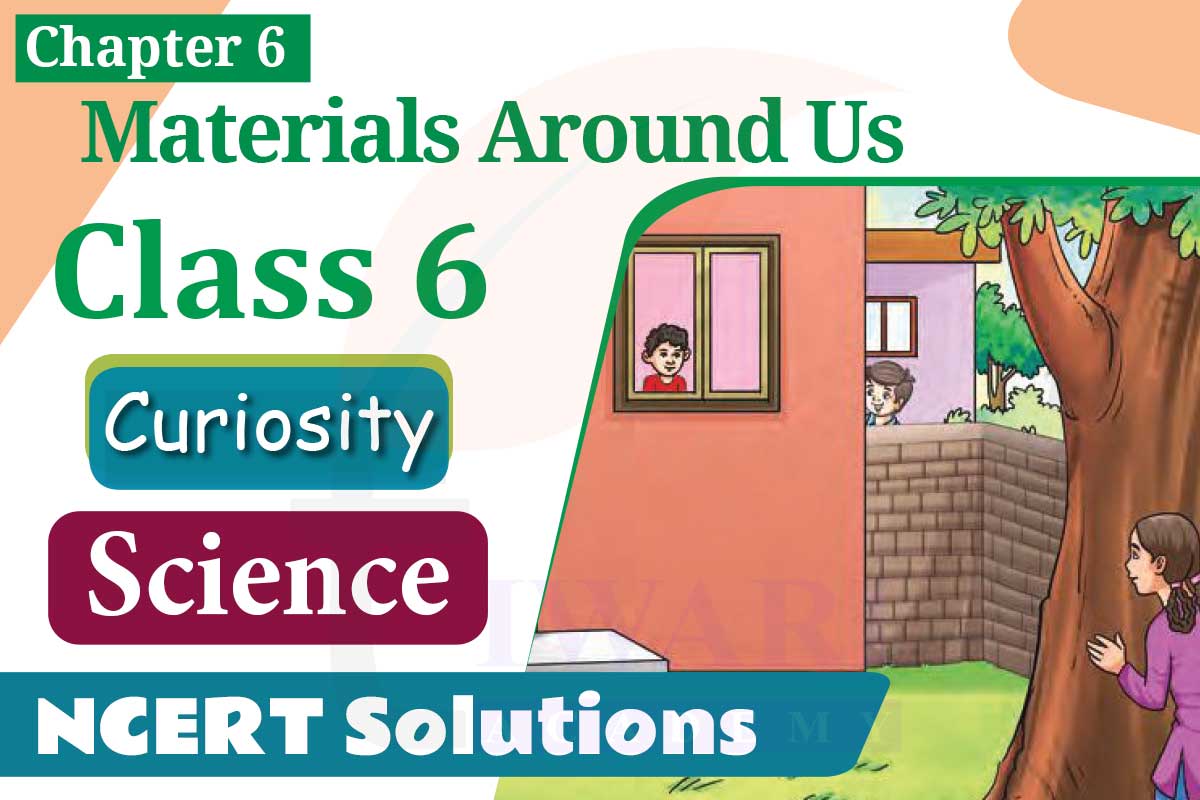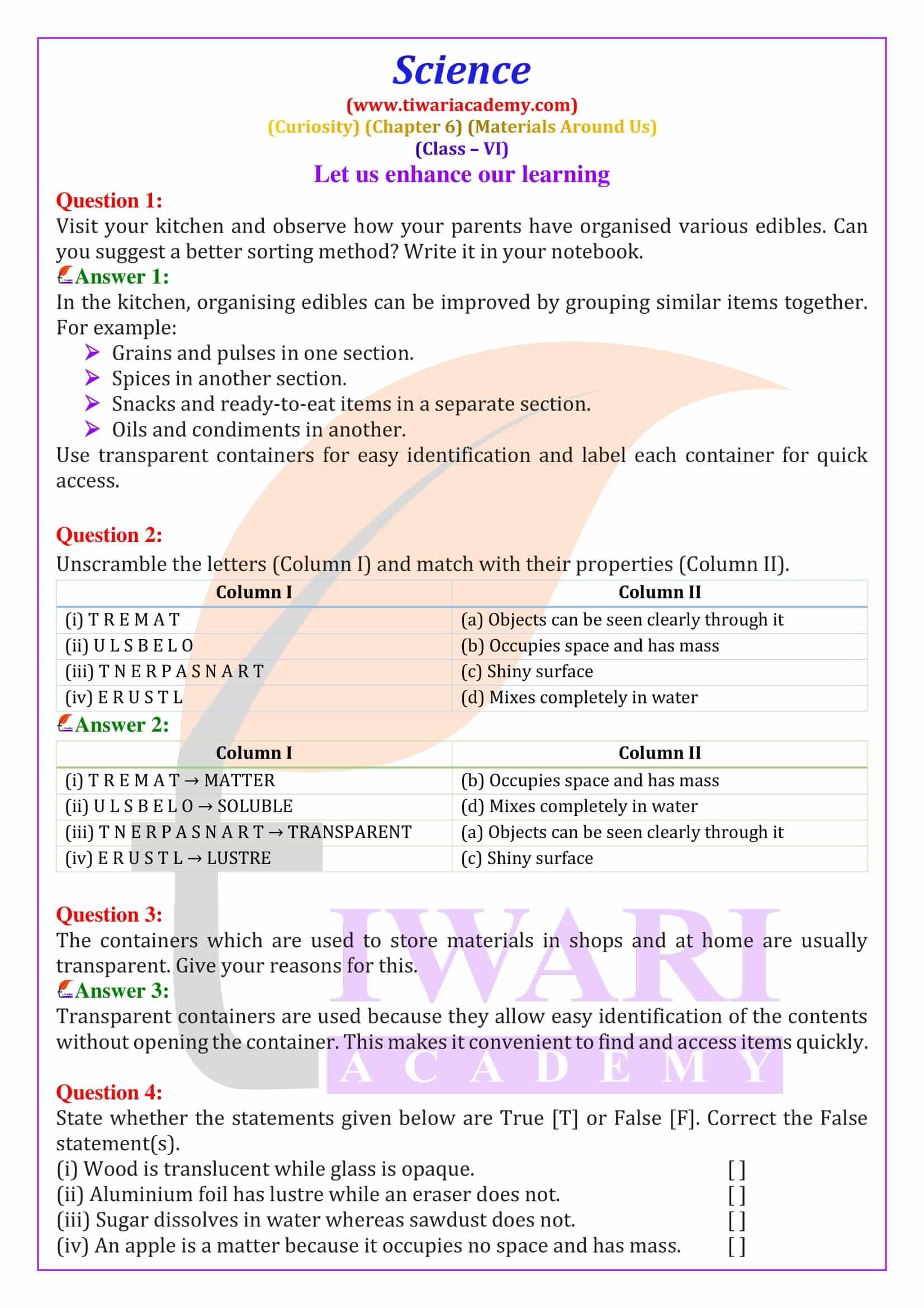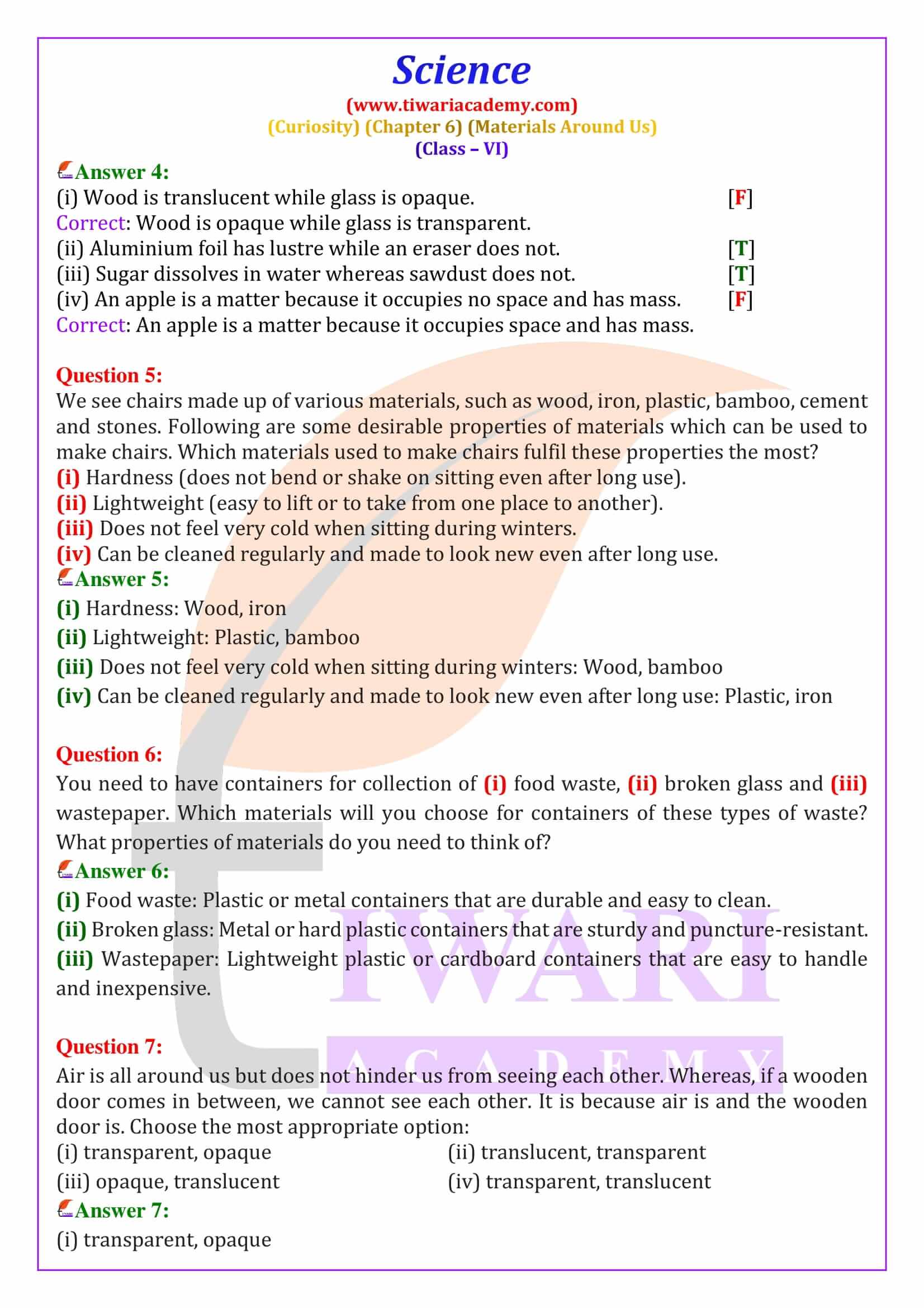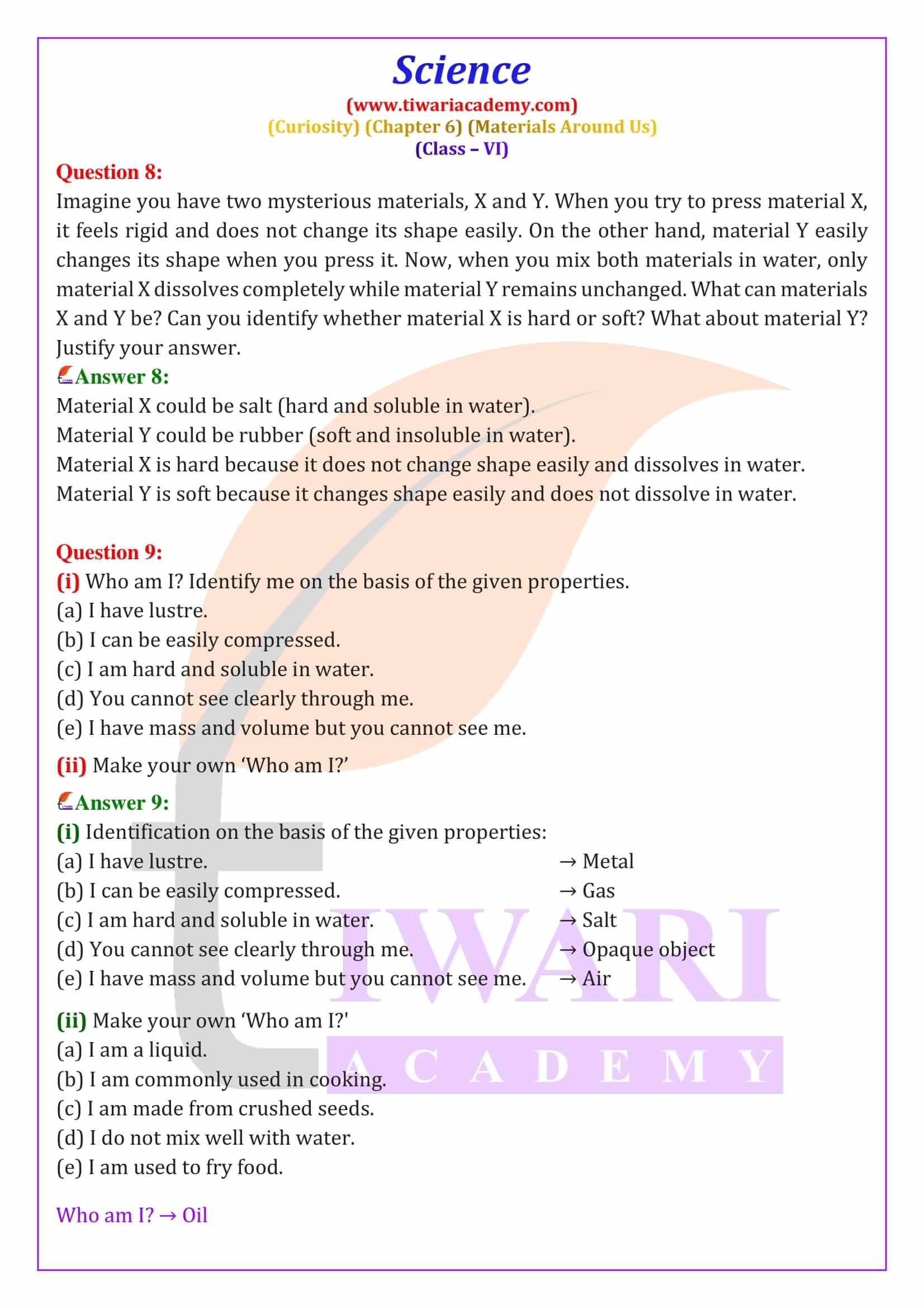NCERT Solutions for Class 6 Science Curiosity Chapter 6 Materials Around Us in Hindi and English Medium updated for academic session 2025-26 based on new addition. The question answers of 6th Science are modified for education according to NEP 2020.
Class 6 Science Curiosity Chapter 6 Materials Around Us
Understanding Materials in Class 6 Science
In the chapter 6 of class 6 science, Ghulan and Sheeta explore their classroom objects, noting their materials. Their teacher, Madam Vidya, introduces the concept that all objects are made of materials like paper, wood, cloth, glass, metal, plastic, and clay. An activity encourages students to list everyday objects and identify their materials. The chapter emphasizes the diversity of materials used in everyday life, providing a foundation for understanding the properties and classification of these materials.

Grouping Materials
Grouping materials based on common properties like shape, color, hardness, softness, and shine is an important scientific method. The chapter discusses the ancient techniques of pottery in the Indian subcontinent, highlighting the materials and processes used. Students are prompted to engage in activities that classify objects based on these properties, learning that an object can be made from different materials and that classification helps in understanding and organizing materials better.
Properties of Materials
Materials have various properties such as appearance, hardness, and ability to dissolve in water. Lustrous materials, usually metals, have shiny surfaces, while non-lustrous materials like wood and rubber do not. Hard materials like stones are difficult to compress or scratch, whereas soft materials like erasers are easy to compress. The chapter 6 includes activities to explore these properties, teaching students how to identify and compare them.
Transparency and Solubility
Materials can be transparent, translucent, or opaque based on their ability to let light pass through. Transparent materials like glass allow clear visibility, while opaque materials like wood do not. Translucent materials like frosted glass partially allow light through. The chapter also explores solubility, explaining that some materials dissolve in water while others do not. Activities help students understand these properties by observing the behavior of different substances in water.
Mass and Volume
The concepts of mass and volume are introduced, explaining that mass quantifies the amount of matter, and volume indicates the space it occupies. Students learn that mass is measured in grams and kilograms, while volume is measured in liters and milliliters. Activities involving weighing different materials help students grasp these concepts. The chapter 6 emphasizes that understanding mass and volume is crucial for studying matter.
Matter and Classification
The chapter 6 concludes with a discussion on matter, defining it as anything that occupies space and has mass. Students learn that materials are types of matter used to create objects, and classification based on properties helps in organizing and understanding these materials. Historical perspectives on classification, such as those in Ayurveda, are also mentioned.
Activities and exercises reinforce the concepts learned, encouraging students to apply their knowledge in practical scenarios. These summaries capture the essence of Chapter 6 from the Class 6 Science textbook, emphasizing observation, classification, and understanding of materials based on their properties.





